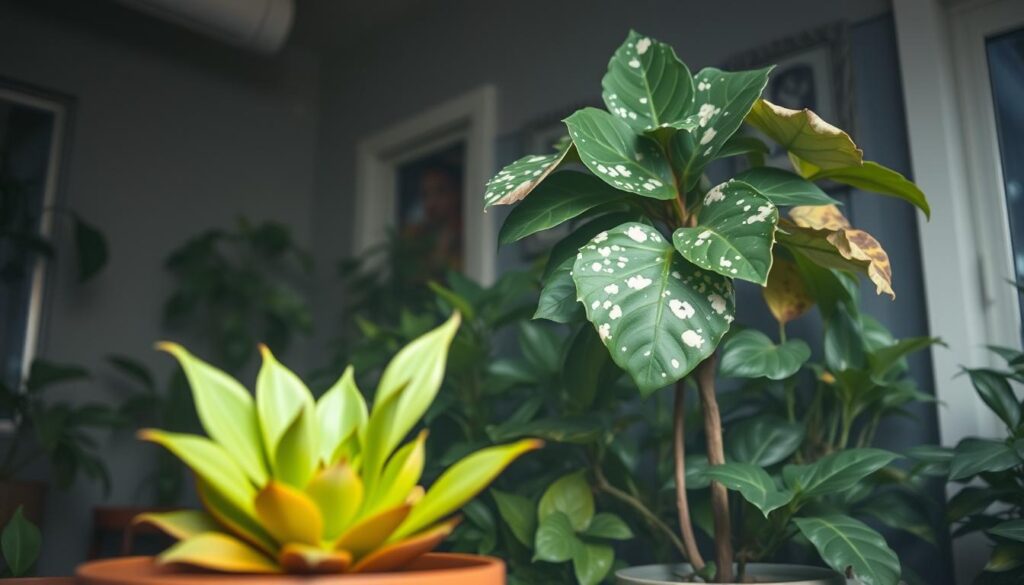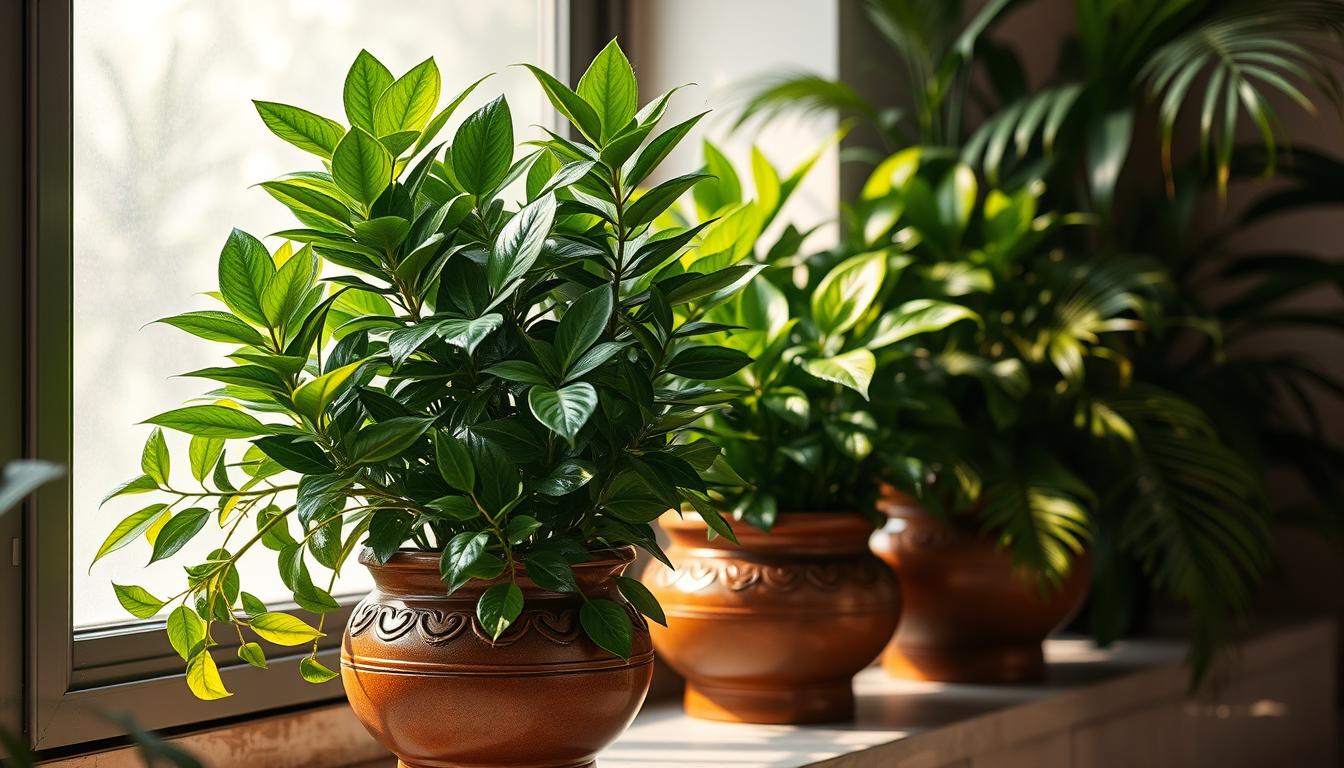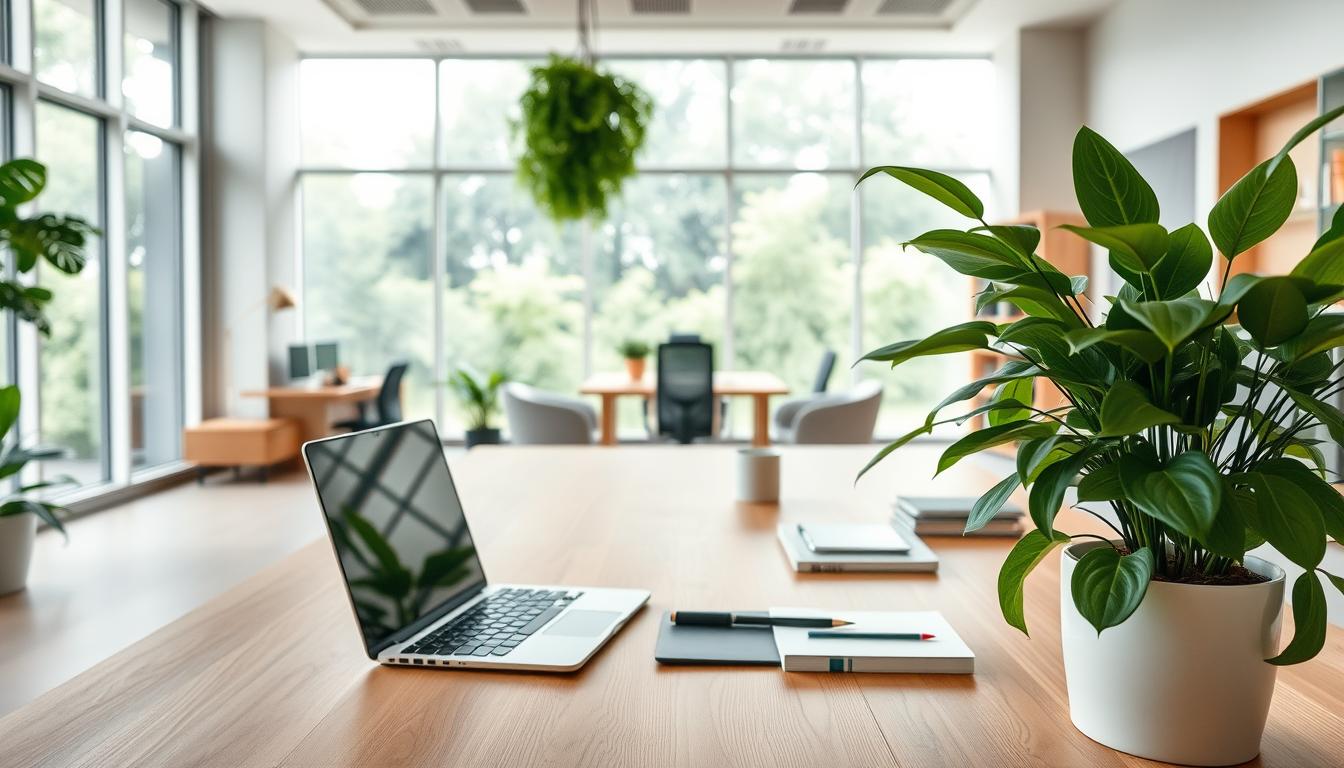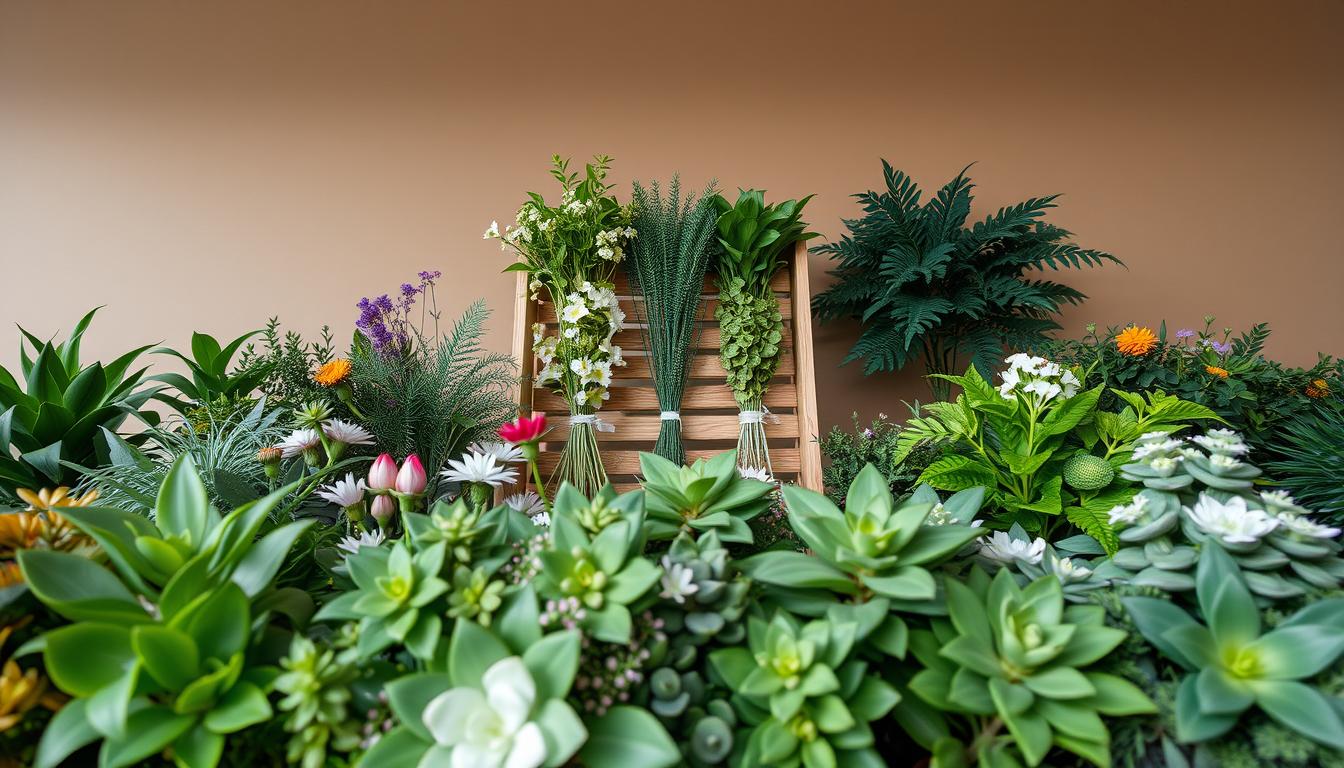The love for faux plants in home décor is growing. Knowing how to take care of them in humid places is key. High humidity can make these plants look less beautiful over time. The right care keeps them looking great and lifelike for longer. This article will guide you on how to keep your faux plants vibrant in humid conditions.
Understanding Humidity and Its Effects on Artificial Plants
Humidity is about how much water vapor is in the air. It’s key for the care of fake plants, affecting how they look and last. When there’s too much humidity, mold and mildew can harm the artificial plants. This leads to their colors changing, bad smells, and a drop in their overall look.
Too little moisture can also be a problem, causing the artificial plants to dry out and their colors to fade. It’s important to keep the air around them just right, mimicking the real plants’ original homes. By doing this, those who love plants can keep their faux greenery looking great and lasting longer.

Importance of Regular Maintenance
Keeping artificial plants clean is key to making them look great. Over time, they can get covered in dust and dirt, making them seem not as lively. A regular cleaning schedule helps keep your decor bright and fresh. This care is also crucial to make your artificial plants last longer. They stay as a lovely part of your indoor spaces.
Clean artificial plants not only look better but also improve your indoor environment. When your surroundings are clean, the air quality gets better too. This is especially true in moist areas. If you don’t clean them often, dirt builds up. This makes them look bad and work poorly.
Spending a little time on cleaning your artificial plants gives you a nicer space. It also protects the money you spent on them. Always remember, taking care of them regularly makes a big difference. It affects how they look and how long they last.
Best Practices for Artificial Plant Maintenance in Humid Areas
Keeping artificial plants in humid areas needs careful planning. It’s important to know which materials and types of plants work best. This knowledge will help your fake plants look good longer in damp conditions. Here are key tips on the best materials and plant choices for these environments.
Choosing the Right Materials for Humid Climates
Picking the right materials for humid areas is key. Aim for artificial plants made of UV-resistant and waterproof stuff. These features help them last longer without damage from moisture. The best materials include:
- Polyethylene: It’s strong and doesn’t fade easily.
- Silk: Looks real, but make sure it’s treated to handle moisture.
- Plastic: It’s light and simple to clean, perfect for moist places.
Common Types of Artificial Plants Suitable for Humidity
Choosing the right artificial plants can make your indoor spaces look nice with less work. Here are some good options for humid areas:
- Ferns: Usually plastic, they stay in shape and keep their color in damp areas.
- Succulents: They’re tough against humidity and have a cool look.
- Palms: These can handle moist air well and bring a tropical vibe.
Simple Dusting Techniques to Keep Artificial Plants Clean
Keeping artificial plants clean keeps them looking good and makes your space better. Using the right dusting methods is key to caring for faux plants. The tools you choose are crucial for keeping your greenery in top shape.
Microfiber cloths and feather dusters are great for cleaning artificial plants. They let you dust off gently without harming the leaves. Make dusting a regular thing to stop dust from gathering and keep the plants looking bright.
- Dust with a microfiber cloth once a week to catch and eliminate particles.
- Use a feather duster to reach difficult areas and avoid pushing dust into the foliage.
- Consider working in sections, focusing on one side at a time for thorough cleaning.
Using these easy methods will help keep your faux plants looking clean and attractive. This way, your artificial plants will always add beauty to your home.
Deep Cleaning for Stubborn Stains and Dirt
Keeping artificial plants looking their best requires effort, especially with tough stains and dirt. For tougher cleaning, a mix of soap and water works great. This method cleans well without harming the materials.
Using a Soap and Water Solution
First, make a gentle soap and water mix for your artificial plants. Follow this easy guide:
- Mix a few drops of mild liquid dish soap into lukewarm water.
- Soak a soft cloth or sponge in this mix, but don’t soak it.
- Softly clean the leaves and stems, focusing on dirty spots.
- Wash the cloth in clean water and wipe the plant to remove soap bits.
- Let the plants dry well before you put them back.
Alternative Methods: Vinegar and Salt Cleaning Techniques
If you still see stains, try cleaning with vinegar. Vinegar kills germs and tackles tough stains well. Here’s how to do it:
- Put equal parts vinegar and water in a spray bottle.
- Spray the stained spots and wait a few minutes.
- Gently rub the spots with a soft cloth.
- Wash off the vinegar with a damp cloth.
- If you need more scrubbing power, add some baking soda to the vinegar mix.
Using these deep cleaning methods will keep your artificial plants looking bright and new, making them a stunning part of your home’s look.
Avoiding Damage from Excessive Moisture
Too much moisture is bad for artificial plants. It can harm their look and build. High humidity can lead to mold and breakdown. So, keeping humidity in check is key to keep artificial plants looking good.
To avoid these problems, try the following steps:
- Keep an eye on humidity with a hygrometer. Act if it goes over 60%.
- Make sure air moves freely around your artificial plants. Don’t put them in cramped spots or where air can’t get through.
- Now and then, wipe the leaves with a dry cloth to stop moisture damage.
- If humidity is high, think about getting a dehumidifier. It helps keep the environment stable and lowers mold and decay risks.
By doing these things, your artificial plants will last longer and look better. Managing humidity well means you can enjoy fake plants without stress from moisture harm.
Effective Storage Solutions for Artificial Plants
It’s important to find the right way to store artificial plants. This keeps them looking good when not in use. Proper storage protects them from humidity, dust, and sunlight. These can harm the materials they’re made of. Good storage keeps faux plants looking their best while they’re put away.
Using protective storage containers is a great idea. These containers keep moisture and dust away. Your plants stay in top condition. Aim for airtight boxes or bins. They keep humidity out and stop dust from covering your plants.
Wrap faux plants in soft materials before storing them. Fabric or bubble wrap is good for this. It adds a cushion and protects from damage when moving or stacking.
Make sure each plant is clean and dry before storing. Dust and debris can cause discoloration or other problems. A thorough cleaning adds to the life of your artificial plants.
Following these steps makes sure your artificial plants are well-kept, even when not in use. The right storage not only protects them. It also keeps them ready for display any time you want.
Enhancing Longevity with Proper Display Techniques
Displaying artificial plants in the right way can really make them last longer and look better. By choosing smart display methods, you not only show off their beauty but also keep them safe from damage in moist places.
Keeping artificial plants in dry areas of your home helps avoid moisture problems that can harm their quality. When you group plants together, it can make a mini humid area. This looks good and helps each plant get enough air. Putting fake plants on shelves or tables also helps air move around them. This stops dust from gathering and keeps the plants looking fresh.
It’s important to move your plants to different spots once in a while. This keeps them looking fresh and avoids them getting dull in one place. Changing up your displays with new themes or seasonal looks makes your space lively. It makes sure your artificial plants stay an attractive part of your home decor.
Tips for Maintaining Appearance in High Humidity
Keeping artificial plants looking good in humid areas needs a special approach. It’s important to clean them often. This stops dust from building up and keeps them looking nice.
Here are some key tips:
- Place artificial plants where it’s not too damp, to help them last longer.
- Use dehumidifiers in indoor areas to control the moisture in the air.
- Keep air moving around the plants to avoid water buildup.
- Clean them regularly to maintain their bright colors and textures.
By focusing on these points, you can take better care of artificial plants. This way, they’ll keep their beauty, even in tough weather conditions.
Conclusion
In summary, taking care of fake plants in humid places is about knowing the challenges humidity brings. This article shared key tips to keep your faux plants bright and lasting longer. Regular care is crucial; it spots issues early and stops damage from too much moisture.
Following the advice given can greatly improve your artificial plants’ life and look. By choosing the right materials, cleaning often, and displaying them smartly, you’re set to handle humidity. Putting time and effort into proper care will make your space look great and feel positive.
Finally, staying dedicated to top-notch care for your fake plants creates a healthier, more joyful home. It turns your home into a beautiful retreat, no matter the weather outside.



